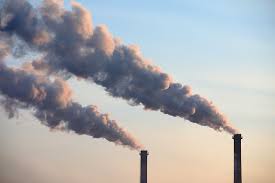The greatest investment in “engineered carbon removal” in history, according to officials, will be made by the Energy Department by awarding up to $1.2 billion to two projects that will directly remove carbon dioxide from the atmosphere.
Direct air capture is a method that hasn’t been used on a significant scale yet but could change everything if it were feasible and affordable.
In a press conference call, Energy Secretary Jennifer Granholm said, “If we deploy this at scale, this technology can help us make substantial ground towards our net zero emissions goals while we are still focused on delivering more clean energy at the same time.
In Louisiana’s Calcasieu Parish, Project Cypress will be constructed. It is intended for Kleberg County, Texas, to host South Texas DAC. Each states that it will initially be able to capture up to one million metric tons of carbon dioxide annually. Once fully operational, the Texas project, according to a spokesman, will scale up to remove 30 million metric tons annually. No time was specified.
According to officials, the initiatives would generate 5,000 jobs for local residents and former employees of the fossil fuel sector.
The conference call’s other participant, Louisiana Governor John Bel Edwards, claimed that his state is best prepared for projects that address carbon because of its geology, history in the petrochemical industry, and density of pipelines.
The statement demonstrates the significant wagers the Biden administration is placing on subterranean carbon dioxide storage technologies to combat climate change. More than any other gas, it is this one that is warming the earth.
A number of scientists supported investing in direct air capture.
The most crucial approaches to combat climate change, according to Claire Nelson, a postdoctoral research scientist at Columbia University’s Lamont-Doherty Earth Observatory, are to stop using fossil fuels and produce the goods we need without causing emissions. However, the amount of change required necessitates the use of another technology, direct air capture. “We need to invest in it today,” she stated, “so that direct air capture is ready at the scale we need it by 2050.”
Tim Lieuwen, executive director of the Strategic Energy Institute at the Georgia Institute of Technology agreed that technology like direct air capture will be necessary to manage the pollution from some types of heavy industries.
The Centre for Global Energy Policy at Columbia University’s Melissa Lott, head of research, said, “We need to look at reducing emissions as quickly as practically possible.”
This entails greater effectiveness, the use of cleaner energy sources, and various other technologies, such as carbon management, she explained.
Direct air capture systems are not yet economically viable, according to Shannon Boettcher, a professor of chemistry at the University of Oregon, and they merit some investment in research and development.
Others, however, contend that financing for carbon dioxide extraction technology is shortsighted and that the emphasis should instead be on reducing emissions because the technology is still in its infancy.
The executive director of Project Drawdown, a nonprofit that promotes climate solutions, Jonathan Foley, argued that the money “could be so much better spent on actual climate solutions that would be cutting emissions from the get-go.” He said that better strategies include increasing energy efficiency and reducing emissions from transportation, agriculture, and electricity production.
What bothers Foley and many other climate scientists is that it might serve as a cover for the fossil fuel industry, giving them the impression that they can continue burning fossil fuels and take them out later.
What part direct air capture will play in reducing emissions is still up for debate. Long-standing technologies like solar, wind, and batteries are still expanding quickly.

















